
Namaste.
Quiz:
The quiz this week is about henna, the ancient art of dying your skin with smushed up plant juice. Please tell me which of these statements are true?
1. Henna is a flowering plant .
2. Henna can be used on skin and leather, but must not be used on hair, or it will cause the hair to turn green and wrinkly.
3. The Pali District in Rajasthan has the most henna growers and sellers in India. There are over 100 henna processors in one city alone.
4. Henna has been used for thousands of years to decorate skin in intricate designs and motifs.
5. Henna dye is applied as a paste made from the leaves of the henna plant. There are two parts to this paste: 1. The crushed leaves ground into powder. 2. A slightly acidic liquid like lemon juice or tea.
6. Henna tattoos are applied by piercing the skin and placing the dye underneath the top layer of skin.
7. The longer you leave the henna paste on the skin, the more lawsone molecules will penetrate the skin and stain it.
8. The henna stain disappears as the skin cells die.
9. People apply henna decorations to cast spells on their enemies and bring rain to parades.
10. Henna artists use traditional motifs, flowers, lines and dots, spirals, and bands of color to create their designs. .
After the quiz got started immediately on our henna project. We wanted to give ourselves the maximum time possible to let the stuff dry, so Ms Ashleigh and Ms Deva came in to help us get the dye on as quickly as we could.
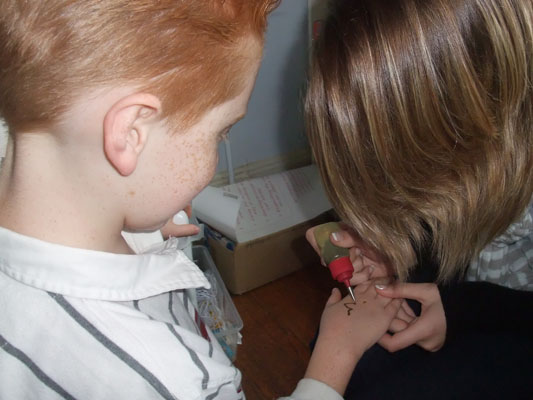
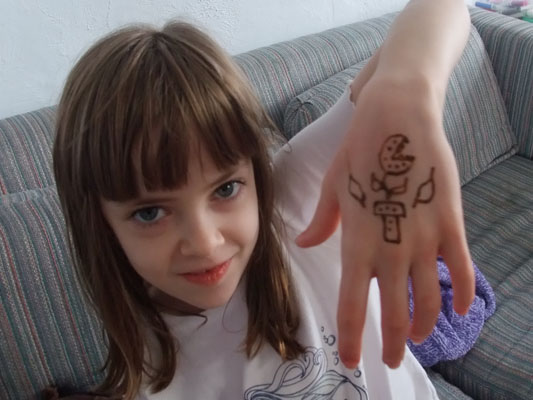
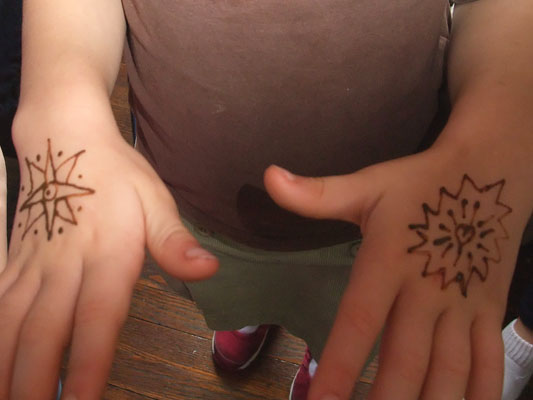
For more pictures, visit our Flickr set and scroll down to the bottom. We also had some fun with henna at the park a few weeks ago, test driving it on the moms. Ms Deva decorated Louis and Miranda for their Halloween appearance as an Indian prince and princess!
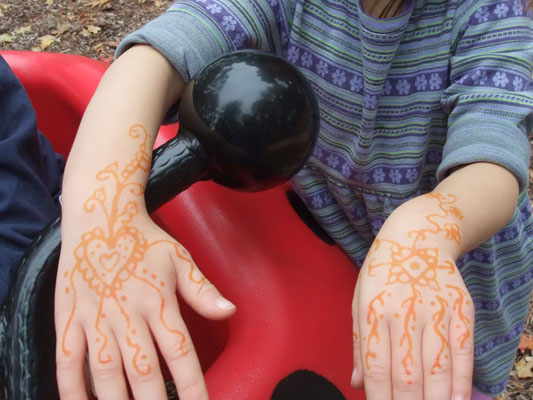
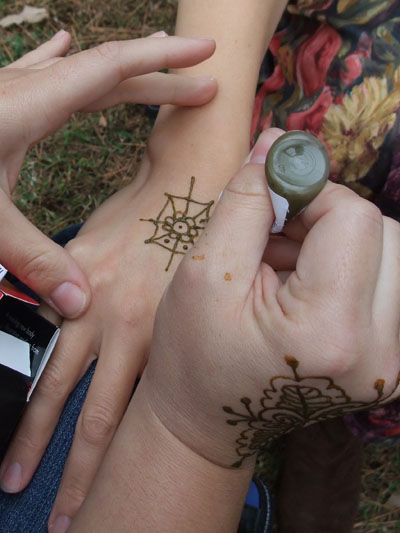
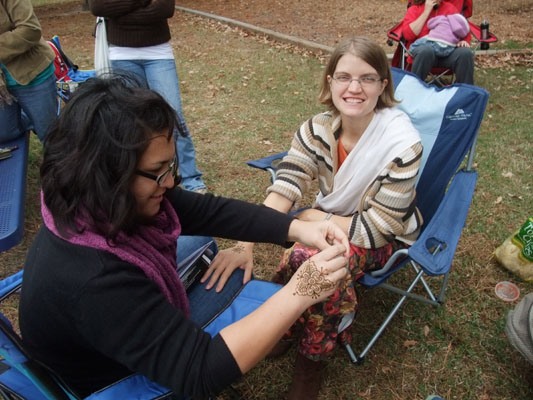
Story: In the enrichment class we talked about the story quite a bit, to make sure the kids are following the plot and ideas. For next week, I'd like them to read the poem at the end of "Tiger! Tiger!" Mowgli says these words as he stands on the council rock after bringing back the hide of Shere Khan, and I want to focus next week on the difference between the village and the jungle, the idea of fitting in, and with the older class some notions of Mowgli's character as an archetypal man, too beastly for the village, too civilized for the jungle. So we'll be focusing on that.
Song and Dance: Next week I told the enrichment class that I am bringing in my prize bag and everyone who can sing or say the first stanza of "If" from memory is going to get a prize. They will have another shot at it the week after, too. I'm going to extend the same offer to the older kids, but they have to say the whole thing! WHAT? THE WHOLE THING? Yes. The whole thing. If they know "Mandalay" too, they can have a prize for that as well, but I'd rather they focused on memorizing "If."
Assignment: The children should be reading the rest of the Mowgli stories to finish the book in the next few weeks. I would like them to be at least through with "Tiger! Tiger!" for sure on Tuesday. After that, the pace is up to you. The fast facts are about the Gond tribe. Next week we'll be doing part one of a project where we make Gond tribal paintings. I'd like them to look at some of these links and start thinking what they'd like their painting to look like. On Tuesday they'll make a sketch of their design which I will transfer as faithfully as possible into a dark outline on posterboard. The following week, they will do the painting part and fill in all the color.
Here is a video made in the Gond art style from a Gond creation myth story:
That's How I See Things is a book illustrated in the Gond style.
A gallery of Gond Tribal Paintings.
Here's just one example:


No comments:
Post a Comment